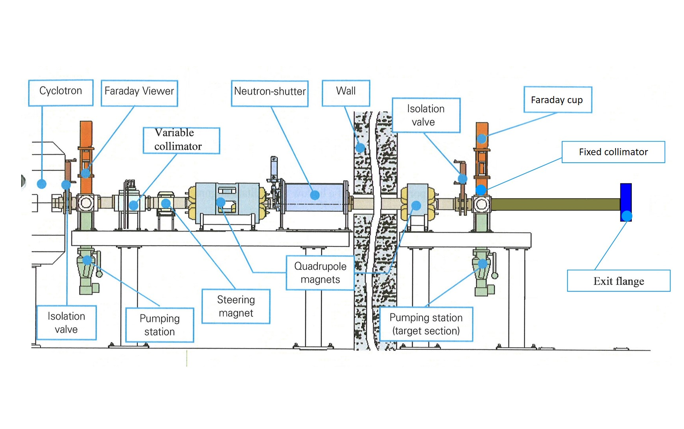CNA Fellow publishes paper on new radiobiology beamline

Anna Baratto Roldán and co-authors from the University of Seville and the National Centre of Accelerators (CNA) in Seville, have recently published an Article entitled “Feasibility Study of a Proton Irradiation Facility for Radiobiological Measurements at an 18 MeV Cyclotron“ in the special issue of Instruments on Diagnostics for Beam and Patient Monitoring.
In the article, the feasibility study of a radiobiology beam line at the CNA 18 MeV proton cyclotron facility is presented. Thanks to its characteristics, the cyclotron external beam line is suitable for the irradiation of mono-layer cultures for the measurement of proton Relative Biological Effectiveness (RBE) at low energies (below 18 MeV). This energy region is of interest for proton therapy, because it can be related to the Bragg peak region of clinical proton beams, where the variation of proton RBE, increasing with the particle Linear Energy Transfer (LET), may lead to unwanted side effects in proton therapy treatments.
In order to obtain the best irradiation conditions for radiobiology experiments, low beam intensities and homogeneous irradiation fields are required. At the cyclotron, these have been obtained by (1) defocusing the beam (2) intercepting the beam path with tungsten scattering foils and (3) varying the exit-window-to-sample distance. The procedures followed to optimize the beam properties are described in the article, together with the Monte Carlo simulations of the beam line and the experimental measurements performed with radiochromic EBT3 films. Meaningful dose rates of about 2-3Gy/min and homogeneous lateral dose profiles, with maximum deviations below 8%, have been achieved in the position of the samples.